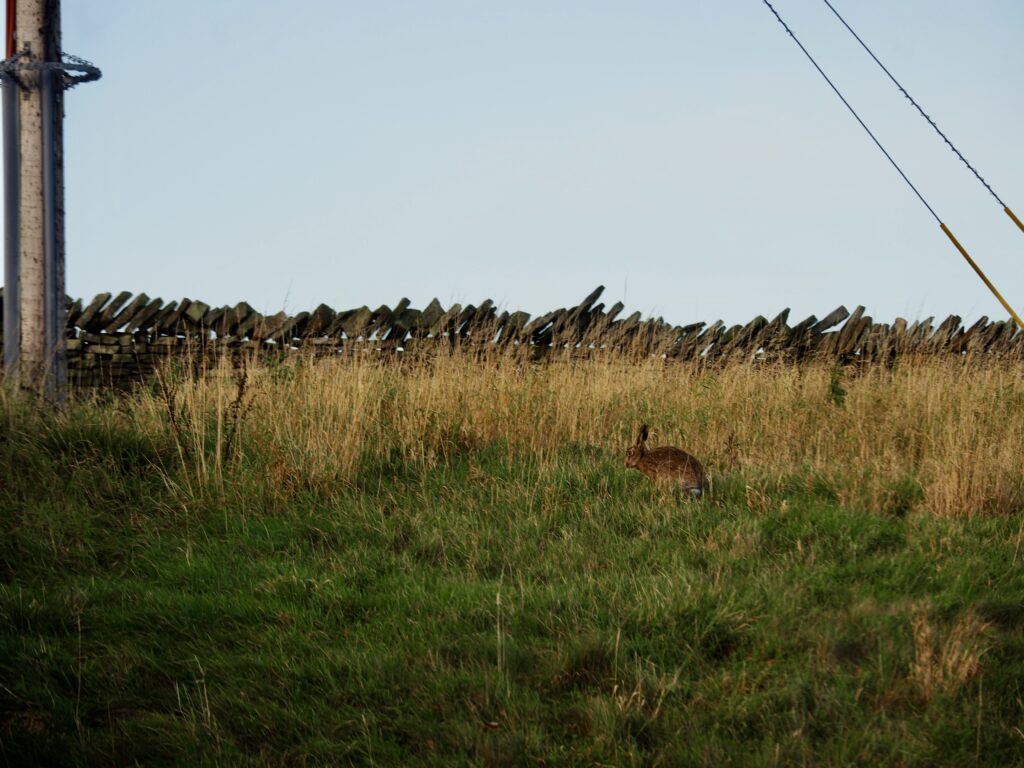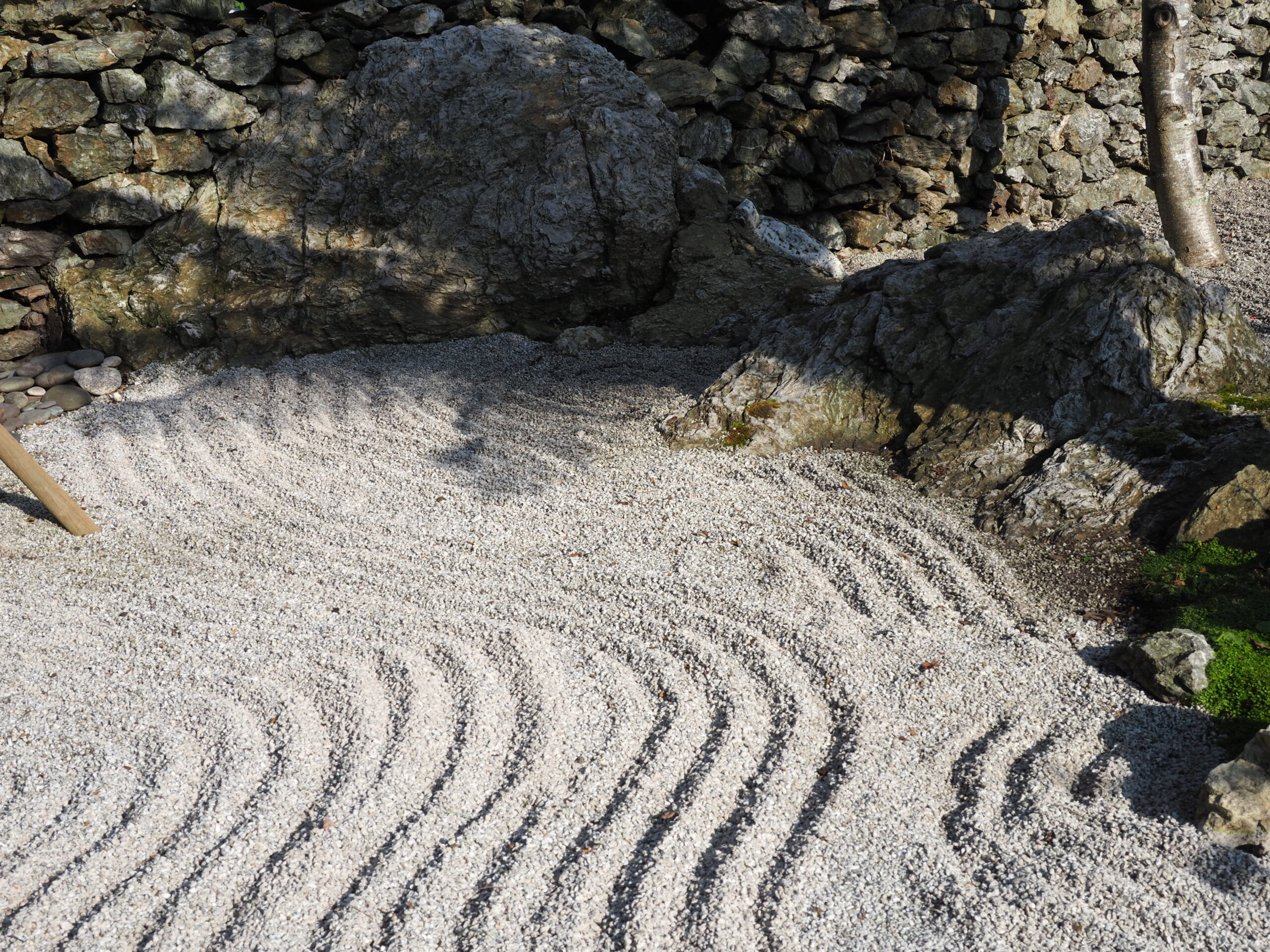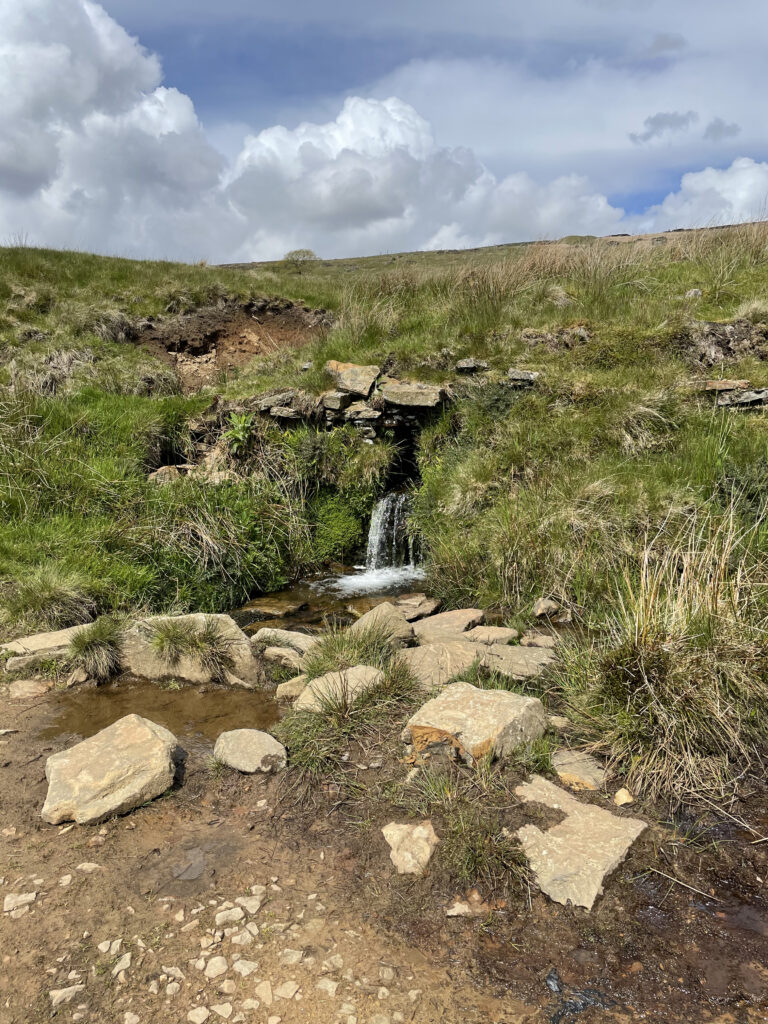Mono no aware, 物の哀れ – an acceptance of impermanence and that things change is an important tenet in Japanese aesthetics. To accept and “letting go” are good for one’s being.
On October 17th 2020, I gave a talk, over Zoom, to members of the Japanese Garden Society (JGS). It was about a 12 year journey developing my garden in Anglesey. The garden project absorbed me. It was a personal search for being true to the place of the garden and simultaneously explore the aesthetics of a Japanese garden art. However, my final word of the presentation was the announcement that, on the following Monday morning, removal men would arrive and I would be leaving the garden behind. Mono no aware.

On October 17th 2020, I gave a talk, over Zoom, to members of the Japanese Garden Society (JGS). It was about a 12 year journey developing my garden in Anglesey. The garden project absorbed me. It was a personal search for being true to the place of the garden and simultaneously explore the aesthetics of a Japanese garden art. However, my final word of the presentation was the announcement that, on the following Monday morning, removal men would arrive and I would be leaving the garden behind. Mono no aware.
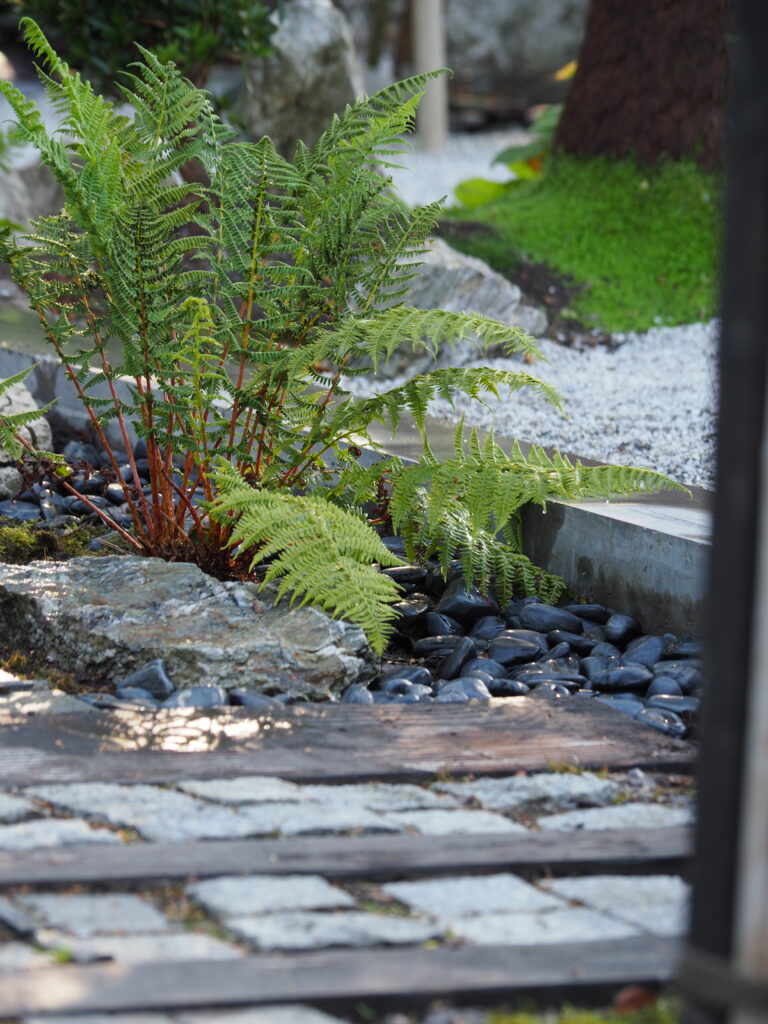
We moved for positive personal reasons. We had tick list for our new home. At first we had thought to find a plot and to plan exactly what we wanted – specifically in relation to environmental sustainability and a garden of sufficient but manageable size in the environs of the Holme or Colne Valley. However project managing a new build would be a slow process. We looked at the market and fortunately soon found a reconstructed barn using recycled materials but with ground source heating and the best modern standards of insulation. Importantly, it was of its landscape.
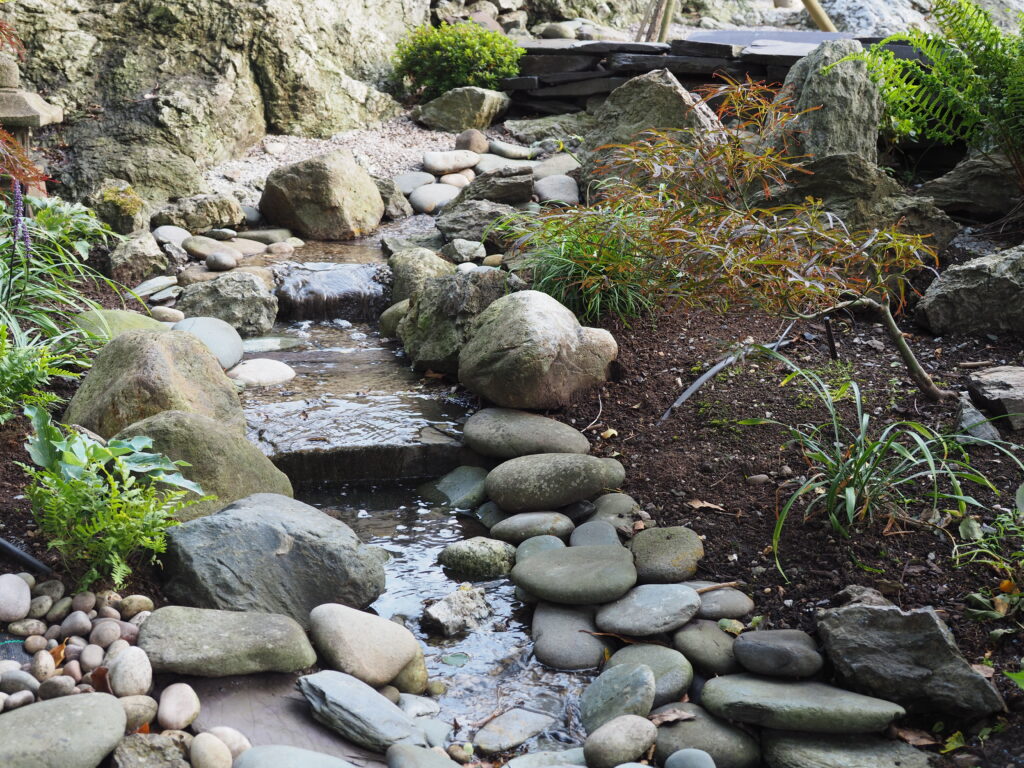
The Anglesey garden, the Garden of the Auspicious Whirlpool, was at 45 m above sea level. It had been garden for over a century, it was 200m from the sea and had hardly any frost. Lush. It had natural blue-green schist emerging from the earth. I was moving to a garden that was 334m altitude (1000ft) with permanent signs for “snow – road closed” nearby.
The new garden was at the rear of the house. It is about 40m long, 9m wide – a manageable size. The earth removal created by the re-build had been the basis of a terrace with high, vernacular drystone walls that sheltered the relaxing occupant from prevailing winds and soaked up the benefits of facing South. The rest of the garden is problematic. The steps up to the terrace are very steep. The steps from the terrace to the rest of the garden are very steep. The garden was – and still is – rough moorland pasture. Put another way the first 10m of garden from the house is a 5m slope. This leads to a 20m+ sloping plateau (another 2m or so). Put another way – there was no way to get a wheelbarrow to the top of the garden.
In addition to a challenging topography near the top of the garden is a pole carrying the HT electric supply – however anyone familiar with gardens in a Japanese city will know that this is a “feature”.
